Current & Upcoming Exhibitions
.jpg)
"Limbs” is a series of gatherings where we can co-create our rituals of regeneration. As destruction of lands, shelter, peoples, hopes and ideals continues under the hands of out of control, self-righteous, weaponized humans, we can grow the ability and imagination to create & perform our rites of healing, instead of entrapping our wounds with trauma and despair.
"Limbs” is a series of gatherings where we can co-create our rituals of regeneration. As destruction of lands, shelter, peoples, hopes and ideals continues under the hands of out of control, self-righteous, weaponized humans, we can grow the ability and imagination to create & perform our rites of healing, instead of entrapping our wounds with trauma and despair.
Past Exhibitions
What can you not see or not see fully? What can only be known in how it affects something else? Try again, looking from different places or in different ways, knowing even that in this there may be something lacking. What hidden thing is revealed as you walk across the room? On the nature of dark matter and other things which cannot be directly known.
What can you not see or not see fully? What can only be known in how it affects something else? Try again, looking from different places or in different ways, knowing even that in this there may be something lacking. What hidden thing is revealed as you walk across the room? On the nature of dark matter and other things which cannot be directly known.
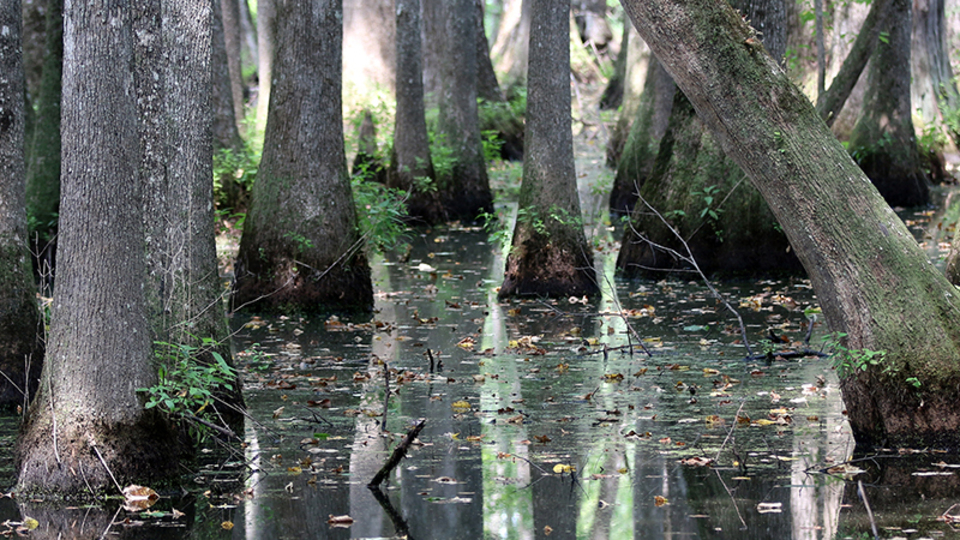
John P. Hastings & Ben Mayock: Traces
Traces is a meditation on the Southern American landscape and how those lands affect its inhabitants. The installation and performance focuses on three separate, but connected, time streams and peoples: pre-contact Native Americans as represented by the Mound building cultures; the colonial-era, as seen through the eyes of doomed explorer Meriweather Lewis; and the 20th century, particularly during the Civil Rights era.
John P. Hastings & Ben Mayock: Traces
Traces is a meditation on the Southern American landscape and how those lands affect its inhabitants. The installation and performance focuses on three separate, but connected, time streams and peoples: pre-contact Native Americans as represented by the Mound building cultures; the colonial-era, as seen through the eyes of doomed explorer Meriweather Lewis; and the 20th century, particularly during the Civil Rights era.
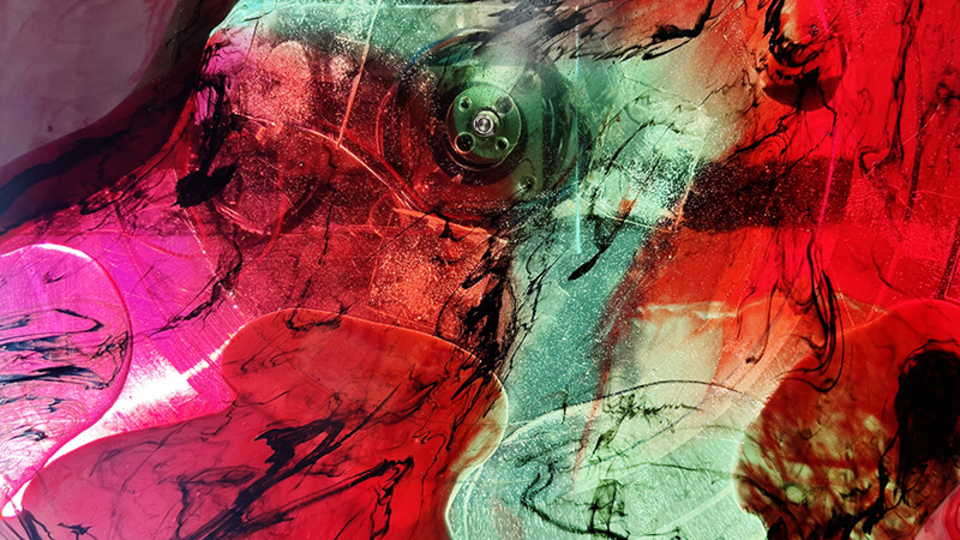
Light Scratches, Deep Cuts is an electro-acoustic exhibition by San Francisco based sound artist Victoria Shen. Shen's site-specific installation features turntables mounted vertically in Indexical’s windows, playing back translucent resin bootlegs of 16-inch radio transcription records produced by the American military in the 1940s and 50s. Bows meant for stringed instruments have been modified and outfitted with diamond-tipped needles as though they were record player tone arms. Over the course of the exhibition, the spinning records which project light and sound into the gallery will be gradually worn down by the needles. Each record performs its own purpose and erasure simultaneously, which is ultimately its existence as a living document. A concert bass drum strung up in the rafters of the space also serves as a sound source, lending a sense of gravity and suspension to the often overlooked material and embodied properties of sound.
Light Scratches, Deep Cuts is an electro-acoustic exhibition by San Francisco based sound artist Victoria Shen. Shen's site-specific installation features turntables mounted vertically in Indexical’s windows, playing back translucent resin bootlegs of 16-inch radio transcription records produced by the American military in the 1940s and 50s. Bows meant for stringed instruments have been modified and outfitted with diamond-tipped needles as though they were record player tone arms. Over the course of the exhibition, the spinning records which project light and sound into the gallery will be gradually worn down by the needles. Each record performs its own purpose and erasure simultaneously, which is ultimately its existence as a living document. A concert bass drum strung up in the rafters of the space also serves as a sound source, lending a sense of gravity and suspension to the often overlooked material and embodied properties of sound.
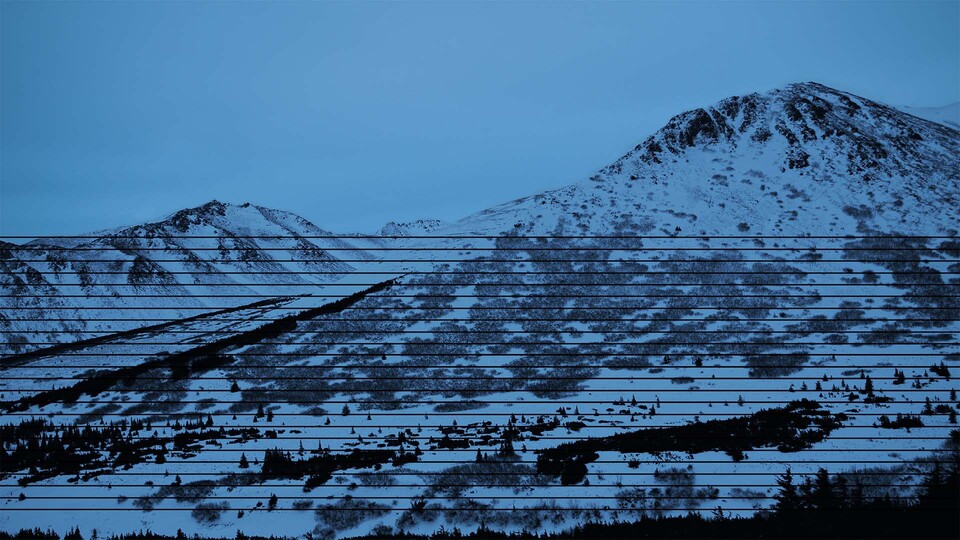
Indexical’s year-long exhibition series Landscape & Life concludes with Alaska Variations, a multichannel audiovisual installation by Canadian artist Paul Walde. The 72-minute work includes videography of the Glen Alps in Anchorage Alaska, where the flora at high altitude is in flux due to climate change. These images of flora are translated into standard musical notation based on the distribution of the vegetation, with each species represented by a group of instruments. In Walde’s work, classical instrumentation is used as a cultural signifier in contrast to information found in nature. This juxtaposition of the “natural” world—as affected by human-created climate change—with an anthropocentric, constructed musical language complicates our assumptions about the separation between what is natural and what is built.
The recorded performance of the score and related footage is assembled into three channels of video and four channels of audio, immersing the viewer in the landscape while drawing attention to the living beings under threat. Alaska Variations will be shown as a multichannel audiovisual installation at Indexical from April 1 through June 5, during open gallery hours unless otherwise noted.
The recorded performance of the score and related footage is assembled into three channels of video and four channels of audio, immersing the viewer in the landscape while drawing attention to the living beings under threat. Alaska Variations will be shown as a multichannel audiovisual installation at Indexical from April 1 through June 5, during open gallery hours unless otherwise noted.
Indexical’s year-long exhibition series Landscape & Life concludes with Alaska Variations, a multichannel audiovisual installation by Canadian artist Paul Walde. The 72-minute work includes videography of the Glen Alps in Anchorage Alaska, where the flora at high altitude is in flux due to climate change. These images of flora are translated into standard musical notation based on the distribution of the vegetation, with each species represented by a group of instruments. In Walde’s work, classical instrumentation is used as a cultural signifier in contrast to information found in nature. This juxtaposition of the “natural” world—as affected by human-created climate change—with an anthropocentric, constructed musical language complicates our assumptions about the separation between what is natural and what is built.
The recorded performance of the score and related footage is assembled into three channels of video and four channels of audio, immersing the viewer in the landscape while drawing attention to the living beings under threat. Alaska Variations will be shown as a multichannel audiovisual installation at Indexical from April 1 through June 5, during open gallery hours unless otherwise noted.
The recorded performance of the score and related footage is assembled into three channels of video and four channels of audio, immersing the viewer in the landscape while drawing attention to the living beings under threat. Alaska Variations will be shown as a multichannel audiovisual installation at Indexical from April 1 through June 5, during open gallery hours unless otherwise noted.
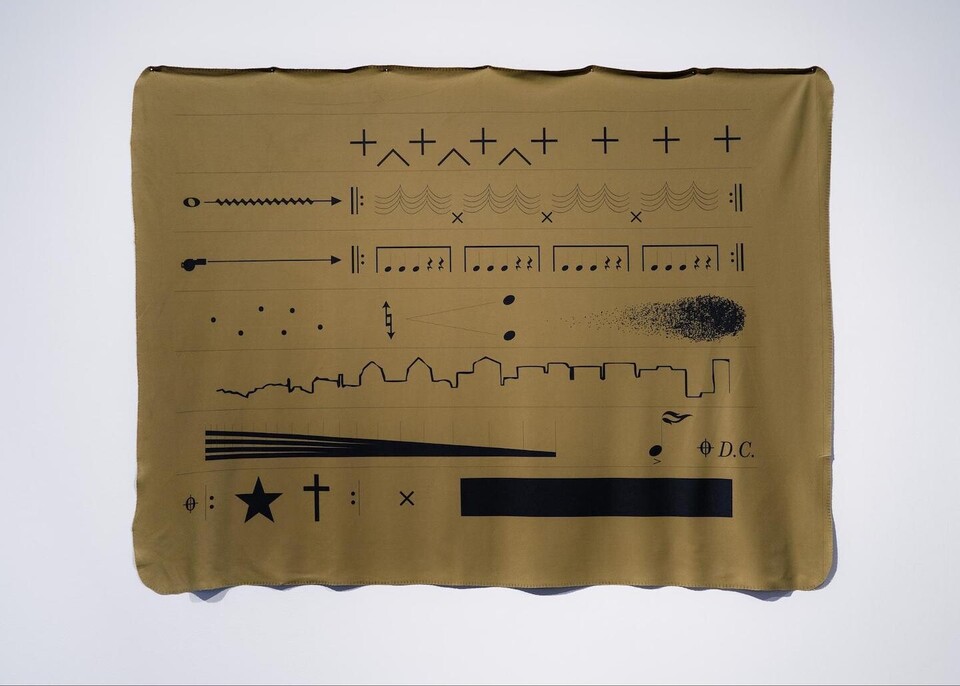
For the second iteration of the exhibition series Landscape & Life we proudly present the work of Diné artist, composer and educator Raven Chacon. Indexical will be exhibiting two works by Chacon, including his early photo and sound series Field Recordings (1999) which depict three sites from the Southwestern U.S. noted for their quietude: Canyon de Chelly, Window Rock and the Sandia Mountains. Chacon's phonography amplifies these quiet spaces to maximum volume, reducing them to noise while simultaneously revealing colors and patterns that might otherwise go undetected. Also on view will be a reproduction of American Ledger No. 1 (2018), a graphic score meant to be performed by “many players with sustaining and percussive instruments, coins, axe and wood, a police whistle, and a match.”
For the second iteration of the exhibition series Landscape & Life we proudly present the work of Diné artist, composer and educator Raven Chacon. Indexical will be exhibiting two works by Chacon, including his early photo and sound series Field Recordings (1999) which depict three sites from the Southwestern U.S. noted for their quietude: Canyon de Chelly, Window Rock and the Sandia Mountains. Chacon's phonography amplifies these quiet spaces to maximum volume, reducing them to noise while simultaneously revealing colors and patterns that might otherwise go undetected. Also on view will be a reproduction of American Ledger No. 1 (2018), a graphic score meant to be performed by “many players with sustaining and percussive instruments, coins, axe and wood, a police whistle, and a match.”

In light of the current COVID conditions and travel difficulties for artists, we have made the decision to cancel and reschedule this event. Stay tuned for more information about the new dates.
Katherine Young’s installation BIOMES 4.1 is part of an ongoing series of works for electronic and acoustic instruments that invites performers to respond to an environment of sound and light analogous to a physical ecosystem. Young assembles an archive of photographic documentation, video, and field recordings on a specific ecological biome—the desert, the marshlands, etc.—and works with performers to develop improvisational strategies and tools that respond to both the materials and the electroacoustic compositions that Young projects throughout the space.
Katherine Young’s installation BIOMES 4.1 is part of an ongoing series of works for electronic and acoustic instruments that invites performers to respond to an environment of sound and light analogous to a physical ecosystem. Young assembles an archive of photographic documentation, video, and field recordings on a specific ecological biome—the desert, the marshlands, etc.—and works with performers to develop improvisational strategies and tools that respond to both the materials and the electroacoustic compositions that Young projects throughout the space.
In light of the current COVID conditions and travel difficulties for artists, we have made the decision to cancel and reschedule this event. Stay tuned for more information about the new dates.
Katherine Young’s installation BIOMES 4.1 is part of an ongoing series of works for electronic and acoustic instruments that invites performers to respond to an environment of sound and light analogous to a physical ecosystem. Young assembles an archive of photographic documentation, video, and field recordings on a specific ecological biome—the desert, the marshlands, etc.—and works with performers to develop improvisational strategies and tools that respond to both the materials and the electroacoustic compositions that Young projects throughout the space.
Katherine Young’s installation BIOMES 4.1 is part of an ongoing series of works for electronic and acoustic instruments that invites performers to respond to an environment of sound and light analogous to a physical ecosystem. Young assembles an archive of photographic documentation, video, and field recordings on a specific ecological biome—the desert, the marshlands, etc.—and works with performers to develop improvisational strategies and tools that respond to both the materials and the electroacoustic compositions that Young projects throughout the space.

Mapping Sonic Futurities (MSF) combines sound art, listening practices, and ecological research to trace the present and future histories of local ecosystems. The project involves a series of 24-hour ‘sound vigils’ in outdoor spaces and habitats with tenuous futures. During these retreats, the keeper of the vigil commits to being in one location for an entire day and night. For each of the 24 hours, they dedicate time to acts of ecologically engaged listening and sounding. This involves making field recordings of the space, performing music that responds to nearby sounds, and/or sitting in meditation with a focus on different modes of listening. All the while, they journal about these experiences. The final documentation of the sound vigil is a 10-minute video art piece where 25 second segments, representing each hour, cycle continuously. The segments contain videos, still images, field recordings, and performances that are meant to give a glimpse of some salient features of the habitat revealed through the vigil keeper’s subjective experience of them. The emphasis on subjectivity is meant to encourage a creative license with how the vigil keeper would like to engage with the environment (i.e. drawing, singing, dancing, playing an instrument, or just listening). Each video art piece is accompanied by field notes taken during the vigil.
Mapping Sonic Futurities (MSF) combines sound art, listening practices, and ecological research to trace the present and future histories of local ecosystems. The project involves a series of 24-hour ‘sound vigils’ in outdoor spaces and habitats with tenuous futures. During these retreats, the keeper of the vigil commits to being in one location for an entire day and night. For each of the 24 hours, they dedicate time to acts of ecologically engaged listening and sounding. This involves making field recordings of the space, performing music that responds to nearby sounds, and/or sitting in meditation with a focus on different modes of listening. All the while, they journal about these experiences. The final documentation of the sound vigil is a 10-minute video art piece where 25 second segments, representing each hour, cycle continuously. The segments contain videos, still images, field recordings, and performances that are meant to give a glimpse of some salient features of the habitat revealed through the vigil keeper’s subjective experience of them. The emphasis on subjectivity is meant to encourage a creative license with how the vigil keeper would like to engage with the environment (i.e. drawing, singing, dancing, playing an instrument, or just listening). Each video art piece is accompanied by field notes taken during the vigil.
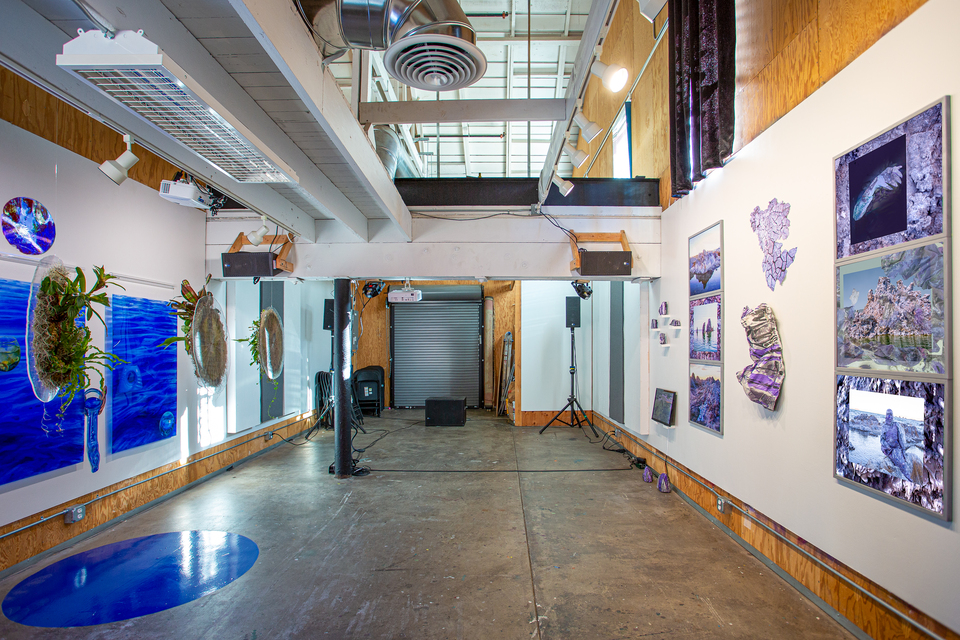
Landscape & Life is a year-long exhibition series that coincides with the opening of Indexical's new brick-and-mortar venue located at the Tannery Arts Center in Santa Cruz, California. The series explores the work of artists who draw our attention to the imminence of life within the landscape, making visible and audible the presence of human and non-human vitality in what in art, geography and law has too often been represented as empty space. This first exhibition features work by Los Angeles-based artists Suzy Poling and Paige Emery.
Landscape & Life is a year-long exhibition series that coincides with the opening of Indexical's new brick-and-mortar venue located at the Tannery Arts Center in Santa Cruz, California. The series explores the work of artists who draw our attention to the imminence of life within the landscape, making visible and audible the presence of human and non-human vitality in what in art, geography and law has too often been represented as empty space. This first exhibition features work by Los Angeles-based artists Suzy Poling and Paige Emery.
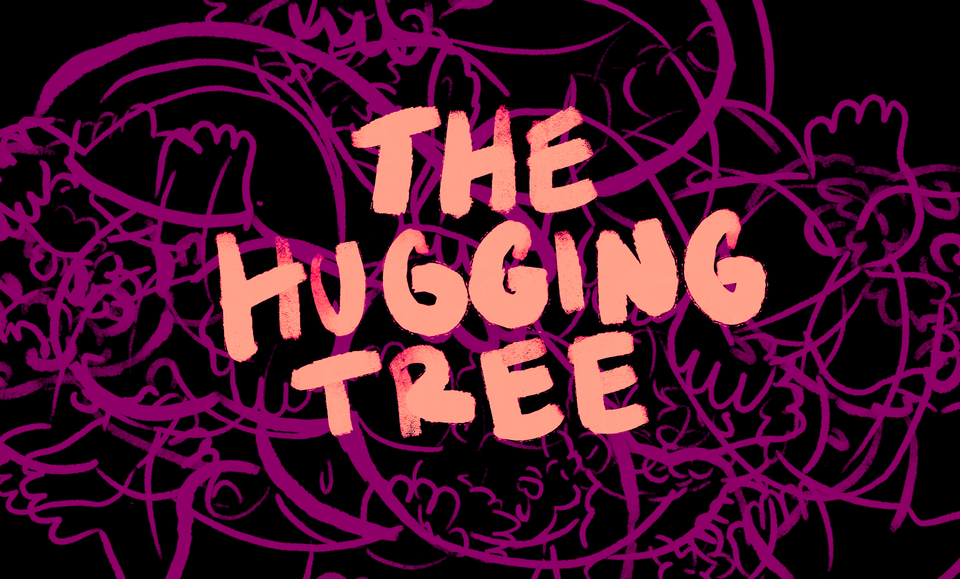
Santa Cruz-based art and music duo BEARPAD take over Indexical’s gallery space for a weekend pop-up installation featuring projections and mirrors, cozy ambient light, and enormous bubs mounted on the gallery wall. Join us for an opening on Friday night from 5-9pm, during Saturday and Sunday gallery hours of 12pm-5pm, or RSVP above for a ticket to the 8pm evening Saturday night performance.
Santa Cruz-based art and music duo BEARPAD take over Indexical’s gallery space for a weekend pop-up installation featuring projections and mirrors, cozy ambient light, and enormous bubs mounted on the gallery wall. Join us for an opening on Friday night from 5-9pm, during Saturday and Sunday gallery hours of 12pm-5pm, or RSVP above for a ticket to the 8pm evening Saturday night performance.
